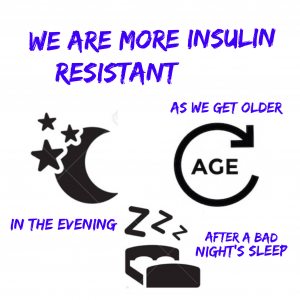Type 2 Diabetes, Fatty Liver, Sugar, Keto and Fasting
Type 2 Diabetes & Insulin
Type 2 diabetes can be summed up as too much sugar in the body, rather than just blood sugar that’s too high. This happens USUALLY by consuming too much sugar and carbohydrates too often and this ends up with the body having no where to put the extra sugar that is eaten. A bit like trying to stuff more clothes in a suitcase that is already full, so the clothes spill out, a bit like the sugar spilling out into the blood, giving high blood sugar which then leads to insulin resistance where the body ‘ignores insulin’.
Insulin lowers blood sugar by moving it into different cells, but if the cells are already full of sugar they can’t take anymore sugar, like trying to get on the tube in London when its packed.

The liver can make this extra sugar into fat which can be stored on the body or in the liver (non alcoholic fatty liver). This means a lot of people with fatty liver which often comes with insulin resistant should be cutting out sugar and carbs, rather than good fats.
Pre-diabets, type 2 diabetes and fatty liver can be ‘reversed’ by fasting, ketogenic diet or just calorie restriction as it will force the body to use up its sugar supply and help with insulin sensitivity. Insulin sensitivity is where the body responds properly to insulin, rather than ignoring it.
When insulin and sugar levels are high in the body, mTOR is activated and this is the main growth pathway in the body, so it will cause all cells to grow, including cancer cells. mTOR is not bad at all if it is not on all the time, but if mTOR is on all the time and the person is in ‘growth and storage’ mode all day then this makes a favourable environment for cancer to grow in. Cancer is complicated and it is not just about mTOR, sugar and insulin but this is why some people choose to fast, limit calories or sugar for health reasons.
People can also get insulin resistant / Type 2 diabetic due to stress, lack of exercise prolonged poor sleep and lack of/loss of muscle mass so it is not diet alone.

Plant molecules or neutraceuticals
As type 2 diabetes is multi faceted there are certain plant molecules that can help and have other benefits even if you don’t have insulin resistance as long as they are used in conjunction with other lifestyle changes.
Berberine can modulate autophagy in adipose tissue to help prevent weight gain and metabolic syndrome (pre diabetes) as well as protect against atherosclerosis (blocked arteries) . Berberine activates AMPK inhibits mTOR and upregulates PPARγexpression. Berberine helps regulate glucose metabolism by increasing insulin sensitivity. Berberine also increases production of new mitochondria, which are what use fat and glucose in the body to make energy.
Metformin also activates AMPK and inhibits mTOR, which is why some biohackers use it for its potential anti-ageing and anti-cancer effects. Metformin works to inhibit AMPK and lower blood sugar by slightly different mechanism to berberine.
Metformin has some gut related side effects like diarrhoea and wind as well as possibly lowering B12 levels, where as berberine can help with some gut issues. Berberine has bad bioavailability so better used in liposomal form.
Cinnamon activates AMPK which then activates glucose utilisation and improves fat burning (if in a calorie deficit or in ketosis). Cinnamon improves metabolism by lowering fasting blood glucose levels and Hemoglobin HBA1c, a measure of average blood glucose levels over time. Cinnamon contains a key bioactive compound, trans-cinnamic aldehyde, which decreases bacterial survival by activating autophagy in microbial invaders, which can help ward off infections.
Milk Thistle is well-known for its liver-protective properties and Silibinin & silybin from milk thistle inhibit mTOR Silibinin activates AMPK, and can restore NAD+ levels in non-alcoholic fatty liver as fatty liver and type 2 diabetes come together most of the time.
Li C, He J et al. Berberine regulates type 2 diabetes mellitus related with insulin resistance 2017 Jun;42(12):2254-2260.
Santos HO, da Silva GA. To what extent does cinnamon administration improve the glycemic and lipid profiles? Clin Nutr ESPEN. 2018 Oct;27:1-9
Salomone F, Barbagallo I et al. Silibinin Restores NAD+ Levels and Induces the SIRT1/AMPK Pathway in Non-Alcoholic Fatty Liver. Nutrients. 2017 Sep 30;9(10
Deng Y, Xu J. et al. Berberine attenuates autophagy in adipocytes by targeting BECN1. Autophagy, 2012; 10(10), 1776–1786
Fan A, Wang J. Berberine alleviates ox-LDL induced inflammatory factors by up-regulation of autophagy via AMPK/mTOR signaling pathway. Journal of Translational Medicine, 2015; 13(1), 92.
Yao Z, Wan Y. Berberine induces mitochondrial-mediated apoptosis and protective autophagy in human malignant pleural mesothelioma NCI-H2452 cells. Oncol Rep. 2018 Dec;40(6):3603-3610
Choi Y, Lee K et al. Activation of AMPK by berberine induces hepatic lipid accumulation by upregulation of fatty acid translocase CD36 in mice. Toxicol Appl Pharmacol. 2017 Feb 1;316:74-82
Wang J, Qi Q. Berberine induces autophagy in glioblastoma by targeting the AMPK/mTOR/ULK1-pathway. Oncotarget. 2016 Oct 11;7(41):66944-66958
Mahmoud AM, Hozayen WG et al. Berberine ameliorates methotrexate-induced liver injury by activating Nrf2/HO-1 pathway and PPARγ, and suppressing oxidative stress and apoptosis in rats. Biomed Pharmacother. 2017 Oct;94:280-291
Li C, He J et al. Berberine regulates type 2 diabetes mellitus related with insulin resistance 2017 Jun;42(12):2254-2260.
Kong W, Zhang H et al. Berberine reduces insulin resistance through protein kinase C-dependent up-regulation of insulin receptor expression Metabolism. 2009 Jan;58(1):109-19
Gomes AP, Duarte FV et al. Berberine protects against high fat diet-induced dysfunction in muscle mitochondria by inducing SIRT1-dependent mitochondrial biogenesis. Biochim Biophys Acta. 2012 Feb;1822(2):185-95
- FEng K, Chen Z et al. Quercetin attenuates oxidative stress-induced apoptosis via SIRT1/AMPK-mediated inhibition of ER stress in rat chondrocytes and prevents the progression of osteoarthritis in a rat model J Cell Physiol. 2019 Mar 10.[Epub ahead of print]
- Kim SG, Kim JR et al. Quercetin-Induced AMP-Activated protein kinase activation attenuates vasoconstriction through LKB1-AMPK signaling pathway. J Med Food. 2018 Feb;21(2):146-153
- Klappan AK, Hones S. Proteasome inhibition by quercetin triggers macroautophagy and blocks mTOR activity Histochem Cell Biol. 2012 Jan;137(1):25-36
- Wang K, Liu R et al. Quercetin induces protective autophagy in gastric cancer cells: involvement of Akt-mTOR- and hypoxia-induced factor 1alpha mediated signaling. Autophagy 2011: 7, 966–978.
- Klappan AK, Hones S. Proteasome inhibition by quercetin triggers macroautophagy and blocks mTOR activity. Histochemistry and Cell Biology 2012; 137, 25–36.
- Beekman K, Rubió L. The effect of quercetin and kaempferol aglycones and glucuronides on peroxisome proliferator activated receptorgamma (PPAR-γ). Food Funct., 2015, 6, 1098–1107
- Escande E, Nin V et al. Flavonoid apigenin Is an inhibitor of the NAD+ ase CD38 implications for cellular NAD+ metabolism, protein acetylation, and treatment of metabolic syndrome. Diabetes, 20113; 62(4), 1084-1093.
- Li X, Wang H et al. Protective effects of quercetin on mitochondrial biogenesis in experimental traumatic brain injury via the Nrf2 signaling pathway. PLoS One. 2016 Oct 25;11(10):e0164237
- Shaik Y, Caraffa A. Impact of polyphenols on mast cells with special emphasis on the effect of quercetin and luteolin. Cent Eur J Immunol. 2018;43(4):476-481
- Jiang K, Wang W et al. Silibinin, a natural flavonoid, induces autophagy via ROS-dependent mitochondrial dysfunction and loss of ATP involving BNIP3 in human MCF7 breast cancer cells. Oncol Rep. 2015 Jun;33(6):2711-8
- Duan WJ, Li QS et al. Silibinin activated ROS-p38-NF-κB positive feedback and induced autophagic death in human fibrosarcoma HT1080 cells. J Asian Nat Prod Res. 2011 Jan;13(1):27-35
- Bai ZL, Tay V. Silibinin induced human glioblastoma cell apoptosis concomitant with autophagy through simultaneous inhibition of mTOR and YAP. Biomed Res Int. 2018 Mar 26;2018:6165192
- Feng N, Luo J et al. Silybin suppresses cell proliferation and induces apoptosis of multiple myeloma cells via the PI3K/Akt/mTOR signaling pathway. Mol Med Rep. 2016 Apr;13(4):3243-8.
- Serviddio G, Bellanti F et al. Silybin exerts antioxidant effects and induces mitochondrial biogenesis in liver of rat with secondary biliary cirrhosis. Free Radic Biol Med. 2014 Aug;73:117-26
- Liu X, Xu Q et al. Silibinin-induced autophagy mediated by PPARα-sirt1-AMPK pathway participated in the regulation of type I collagen-enhanced migration in murine 3T3-L1 preadipocytes. Mol Cell Biochem. 2019 Jan;450(1-2):1-23
- Salomone F, Barbagallo I et al. Silibinin Restores NAD+ Levels and Induces the SIRT1/AMPK Pathway in Non-Alcoholic Fatty Liver. Nutrients. 2017 Sep 30;9(10
